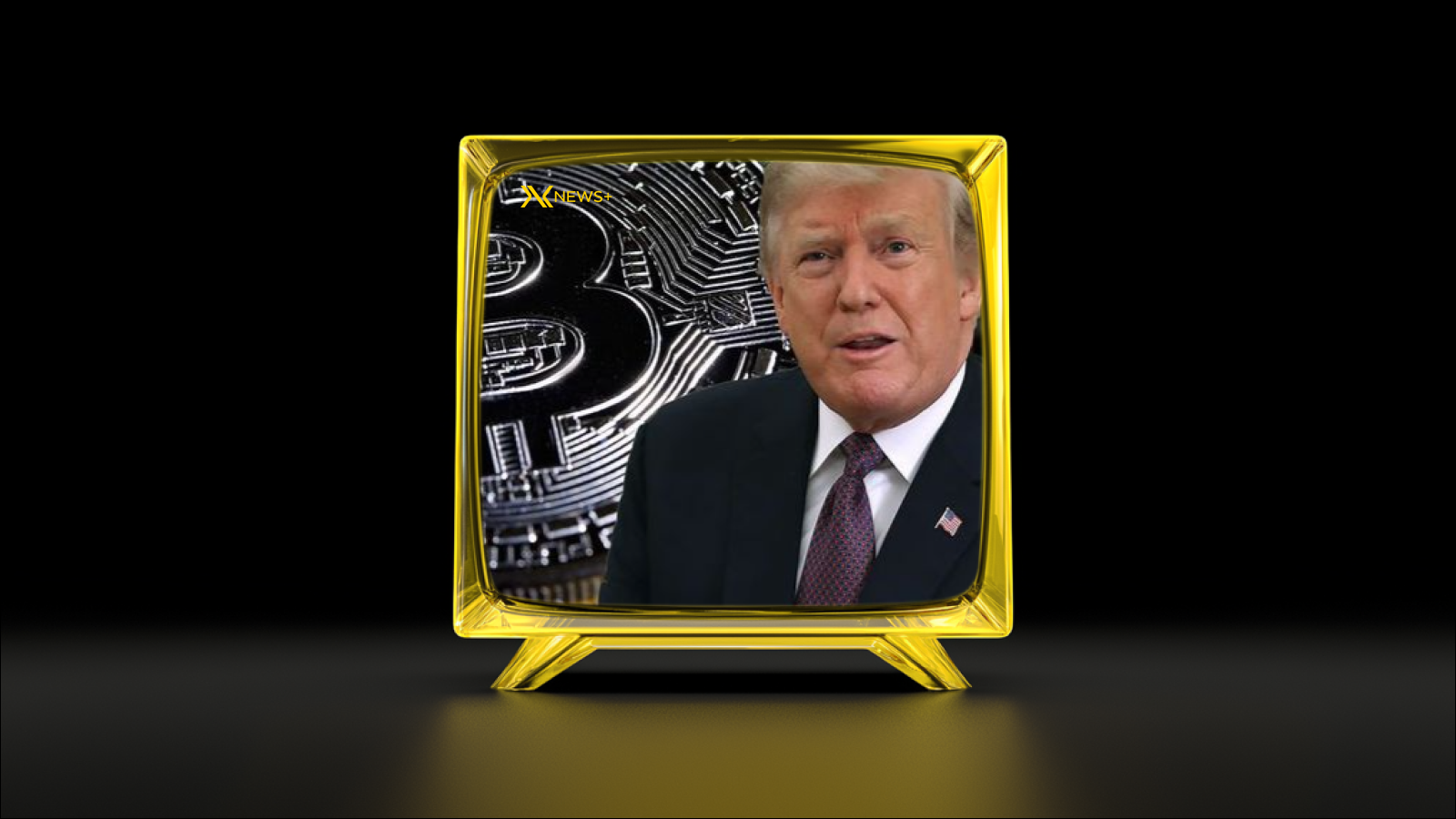U.S. Tariffs and Global Uncertainty Shake Cryptocurrency Markets
The introduction of new U.S. tariffs has sent ripples through the cryptocurrency markets, particularly affecting prominent digital currencies. As tensions escalate, Bitcoin and Ethereum face market volatility that complicates investor sentiment. This uncertainty is magnified as market participants weigh the geopolitical implications of trade conflicts alongside their investment strategies.
In recent weeks, as the U.S. has levied tariffs on various goods from China, the uncertainty surrounding international trade has cast a shadow over the financial landscape. Investors are increasingly cautious, often pulling back from riskier assets, including cryptocurrencies, fearing that such moves might lead to further economic strife. Consequently, Bitcoin and Ethereum face market volatility, as their prices fluctuate in reaction to these global tensions.
The volatility is also reflected in transaction volumes, with many traders opting for safer assets as geopolitical risks rise. Market analysts suggest that the ongoing back-and-forth between the U.S. and China could have significant long-term impacts on cryptocurrency adoption and stability, further weighing on sentiments targeting Bitcoin and Ethereum.
Furthermore, adjustments in the global economy, such as shifts in supply chains and consumer confidence, can exacerbate fluctuations in the cryptocurrency markets. As traders and analysts continue to monitor these developments, the expectation is that Bitcoin and Ethereum face market volatility will remain a central theme in market discussions, impacting decisions on future investments.
China Responds with Retaliatory Tariffs and Export Restrictions
As tensions between the U.S. and China escalate, China’s government has initiated a series of retaliatory tariffs and export restrictions that are sending shockwaves through global markets, including the cryptocurrency sector. These measures underscore the fragility of current trade relations and are further contributing to the Bitcoin and Ethereum Face Market Volatility narrative.
The implications of China’s actions extend beyond just traditional markets; they’re affecting digital currencies as well. Investors are concerned that these tariffs could exacerbate the uncertainty surrounding international trade, leading to further fluctuations in the prices of major cryptocurrencies like Bitcoin and Ethereum.
Moreover, the Chinese government’s decision to restrict exports of critical materials, such as rare earths, poses a direct threat to industries reliant on these resources. Cryptocurrencies, already susceptible to market fluctuations, find themselves caught in the crossfire as this geopolitical struggle intensifies.
As the situation develops, traders and investors alike are keeping a close eye on how these actions will influence market dynamics. The ongoing volatility signals a need for caution, especially for those heavily invested in cryptocurrencies. In this climate, it is becoming increasingly clear that the connection between geopolitics and the crypto market can no longer be ignored.
Altcoins Show Recovery Amid Market Turmoil
Despite the prevailing uncertainty characterized by Bitcoin and Ethereum Face Market Volatility, altcoins have displayed surprising resilience. Many altcoins, which are often overshadowed by the leading cryptocurrencies, have started to carve out their own upward trajectories as traders seek diversification in their portfolios. This shift indicates a potential shift in market dynamics, where investors are exploring alternatives beyond the major players.
This recovery has been fueled by several factors, including renewed interest in decentralized finance (DeFi) and non-fungible tokens (NFTs). Projects that focus on innovation and real-world applications are gaining traction, leading to an increase in both trading volumes and market capitalization for several altcoins. As a result, many investors view altcoins as a viable hedge against the volatility that Bitcoin and Ethereum Face Market Volatility, especially in the current geopolitical climate.
The overall market sentiment is cautiously optimistic, with analysts suggesting that the altcoin market could continue this upward trend if Bitcoin and Ethereum stabilize. Traders are closely monitoring the performance of these cryptocurrencies, as a stronger Bitcoin often influences altcoin prices positively. Consequently, the interdependence of these assets presents unique opportunities for profit.
While the key players face turbulence, altcoins are showcasing potential for recovery and growth. Investors are encouraged to stay informed about market developments and to consider diversifying their assets to capitalize on the promising outlook for altcoins amid the ongoing market uncertainties.
Market Sentiment Remains Fragile Amid Technical Challenges
The current landscape of the cryptocurrency market is characterized by heightened uncertainty and volatility, particularly affecting major players like Bitcoin and Ethereum Face Market Volatility. As traders navigate through tumultuous times, market sentiment has been fluctuating wildly, creating an atmosphere of cautious optimism mixed with skepticism.
Technical analysis suggests that both Bitcoin and Ethereum are at critical junctures. With resistance levels being tested and support zones coming under pressure, traders are closely monitoring price movements. A failure to break through resistance could further dampen sentiment, leading to additional selling pressure. Conversely, a significant rally could restore some faith in the market.
Furthermore, fear-driven decisions based on external factors, such as U.S.-China trade relations, have compounded these technical challenges. The unpredictability of geopolitical events continues to influence market sentiment, making it increasingly difficult for investors to make informed decisions.
Social media and news narratives also play a pivotal role in shaping investor perceptions. As sentiments shift rapidly, keeping track of prevailing trends will be essential for those involved in cryptocurrency trading.
Frequently Asked Questions
What are the main factors contributing to the market volatility of Bitcoin and Ethereum?
The primary factors contributing to the market volatility of Bitcoin and Ethereum include fluctuations in market demand, regulatory news, technological advancements, and macroeconomic conditions such as U.S.-China trade tensions.
How do U.S.-China trade tensions impact cryptocurrency markets?
U.S.-China trade tensions can lead to increased uncertainty in global markets, causing investors to react by reallocating their portfolios, often leading to heightened volatility in cryptocurrencies as investors seek safe-haven assets.
Are Bitcoin and Ethereum equally affected by market volatility?
While both Bitcoin and Ethereum are affected by market volatility, Bitcoin often experiences sharper price movements due to its status as the largest cryptocurrency and its perception as a digital gold, while Ethereum’s price is more influenced by developments in blockchain technology and decentralized applications.
What should investors consider before investing in cryptocurrencies during volatile times?
Investors should consider their risk tolerance, stay informed about market trends, diversify their portfolios, and be cautious of emotional trading driven by fear or hype during volatile periods.
Can regulatory news affect the value of Bitcoin and Ethereum?
Yes, regulatory news can significantly affect the value of Bitcoin and Ethereum, as announcements regarding new laws or regulations can influence market sentiment, investor confidence, and overall supply and demand.
What role does market sentiment play in the volatility of cryptocurrencies?
Market sentiment plays a crucial role in cryptocurrency volatility, as positive or negative news can lead to sudden price swings, exacerbating the effects of market speculation and trading patterns.
How can investors protect themselves from cryptocurrency market volatility?
Investors can protect themselves by utilizing strategies such as dollar-cost averaging, setting stop-loss orders, staying updated on market trends, and maintaining a diversified investment portfolio to mitigate risks.
Disclaimer
This article is for informational purposes only and does not constitute financial or investment advice. Cryptocurrency markets are highly volatile and influenced by various macroeconomic factors. Readers are advised to conduct their own research (DYOR) and consult with a licensed financial advisor before making any investment decisions.





